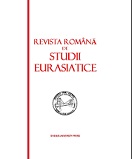LES CRÂNES SURMODELÉS AU PROCHE-ORIENT ANCIEN
THE MODELLING SKULLS IN THE ANCIENT NEAR-EAST
Author(s): FLorine MarchandSubject(s): History
Published by: Ovidius University Press
Keywords: Modeled skulls; Ancient Near East; Neolithisation process; Modelling technique; Ancestor cult; PPNB (Pre-Pottery Neolithic B); Pottery Neolithic; Plaster; Collagen; Collective memory; Social organization.
Summary/Abstract: In this article, we would like to highlight that during the Neolithisation process cultural, religious and funerary practices change. We will especially focus on a funerary practice, the modelling skulls, born during the middle Pre-Pottery Neolithic B (8200-7500 B.C.) in the North and South Levant and continues until the late Pre-Pottery Neolithic B (7500-7000 B.C.), in the same geographical area. For an unknown reason, after the late PPNB, this technique disappears from Levant but starts again in Anatolia during the Pottery Neolithic (7000-5000 B.C.). A total of eighty modeled skulls were found in the follows sites: Ain Ghazal, Jordan (middle PPNB); Beisamoun, Israel (middle PPNB); Jericho, Palestine (middle PPNB); Kfar Hahoresh, Israel (middle PPNB); Nahal Hemar, Israel (middle PPNB); Yiftahel, Israel (middle PPNB); Tell Aswad, Syria (middle and late PPNB); Tell Ramad, Syria (late PPNB); Koşk Höyük, Anatolia (Pottery Neolithic) and Çatal Höyük, Anatolia (Pottery Neolithic). We will study the eighty modeled skulls, the modelling techniques and the cultural interpretations assigned to those skulls. Our principal purpose is to see what we can learn about the Neolithic communities of the Near East from the different aspects of the modeled skulls.
Journal: Revista Română de Studii Eurasiatice
- Issue Year: 8/2012
- Issue No: 1+2
- Page Range: 175-204
- Page Count: 30
- Language: French

